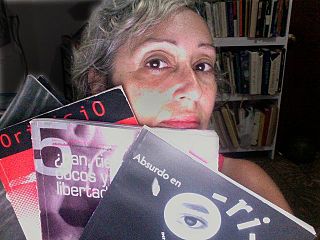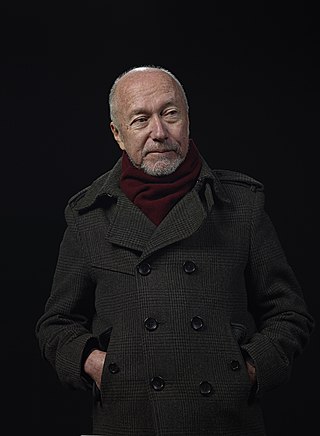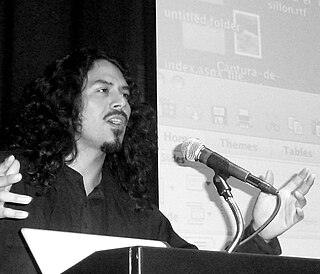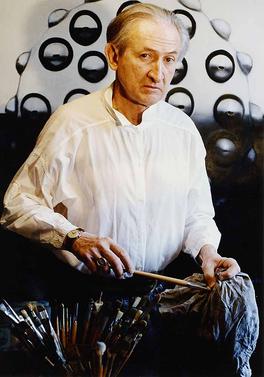
Biennale, Italian for "biennial" or "every other year", is any event that happens every two years. It is most commonly used within the art world to describe large-scale international contemporary art exhibitions. As such the term was popularised by Venice Biennale, which was first held in 1895. Since the 1990s, the terms "biennale" and "biennial" have been interchangeably used in a more generic way - to signify a large-scale international survey show of contemporary art that recurs at regular intervals but not necessarily biannual. The phrase has also been used for other artistic events, such as the "Biennale de Paris", "Kochi-Muziris Biennale", Berlinale and Viennale.

Juan T. Vázquez Martín lived and worked in Havana, died in Miami. This artist is listed among the Cuban Painters masters. An exceptional prolific abstract painter with a refine style of paint, creativity and cultivated technique. Painter, founder and director of art schools and galleries, teacher of drawing and painting, he was an artist who travelled the world for solo exhibitions, or as a curator for Cuban painters art shows. His paintings are held in international and private collections in South and Central America and Caribbean islands, North America, Europe, Asia, Africa and Middle East.
Luis Camnitzer is a German-born Uruguayan artist, curator, art critic, and academic who was at the forefront of 1960s Conceptual Art. Camnitzer works primarily in sculpture, printmaking, and installation, exploring topics such as repression, institutional critique, and social justice.

KCHO, born Alexis Leiva Machado on the Isle of Pines (1970), is a contemporary Cuban artist. He first attracted international attention by winning the grand prize at South Korea's Gwangju Biennale in 1995.
Emilio Sanchez (1921–1999) was an American artist known for his architectural paintings and graphic lithographs. His work is found in the permanent collections of the Metropolitan Museum of Art, Museum of Modern Art, National Gallery of Art, Smithsonian American Art Museum, Museo Nacional de Bellas Artes de La Habana, Bogotá Museum of Modern Art, La Tertulia Museum, and the National Gallery of Australia.
Javier Cambre -born Xavier Cambre in San Juan, Puerto Rico, is a contemporary artist with dual citizenships from Spain and the US, working in diverse media such as drawing, photography, collage, painting, text and sculpture. His maternal grandfather was the poet Evaristo Ribera Chevremont.
Aaron Young is an American artist based in New York City. Young's work became known when MoMA purchased video documentation of his student project involving a motorcyclist repeatedly cycling around the San Francisco Art Institute.
Papo Colo is a Puerto Rican performance artist, painter, writer, and curator. He was born in San Juan, Puerto Rico. He lives and works in New York City and in El Yunque rainforest in Puerto Rico. Papo Colo is an interdisciplinary artist, whose work ranges from performance, theater and installation art to painting, writing, and graphic design.
The Bienal de La Habana was founded in 1984. It takes place in Havana (Cuba) every two years. It principally aims at promoting the developing world incontemporary art circles, giving priority to Latin American and Caribbean artists, although artists from all over the world submit works.

Teresa López is an artist, graphic designer and art professor. She was born in Humacao, Puerto Rico and lives in San Juan, Puerto Rico. López was the creator, graphic designer and director of Orificio, an independent art publication for contemporary Puerto Rican art. Orificio showcased the work of established and emerging contemporary artists in Puerto Rico and also functioned as an exhibition space.

Gerardo Mosquera is a freelance curator, critic, art historian, and writer based in Havana, Cuba. He was one of the organizers of the first Havana Biennial in 1984 and remained central to the curatorial team until he resigned in 1989. Since then, his activity turned to be mainly international: he has been traveling, lecturing and curating exhibitions in more than 80 countries. Mosquera was adjunct curator at the New Museum of Contemporary Art, New York, from 1995 to 2009. Since 1995 he is advisor in the Rijksakademie van Beeldende Kusten in [Amsterdam]. His publications include several books on art and art theory, and more than 600 articles, reviews and essays have appeared in numerous magazines, including: Art Nexus, Cahiers, Lápiz, Neue Bildende Kunst, Oxford Art Journal, Poliester, Third Text. Among other volumes, Mosquera has edited Beyond the Fantastic: Contemporary Art Criticism from Latin America and co-edited Over Here: International Perspectives on Art and Culture. His theoretical essays – which have been influential in discussing art’s cultural dynamics in an internationalized world, and contemporary Latin American art – are dispersed in English, but have been collected in books in Caracas and Madrid in Spanish, and in Chinese in Beijing. Mosquera was the Artistic Director of PHotoEspaña, Madrid (2011–2013), the Chief Curator of the 4th Poly/Graphic San Juan Triennial (2015-2016), co-curator of the 3rd Documents, Beijing (2016) and co-curator of the Guangzhou Image Triennial (2021).

Víctor Vázquez is a photographer and a contemporary conceptual artist born in San Juan, Puerto Rico. Víctor Vázquez has been working as an artist for more than 20 years, creating photographs, three-dimensional objects, videos and installation works in which the human body figures both conceptually and formally. Vázquez offers a series of semiotic constructs that navigate identity, ritual, politics and anthropological inquiry. Themes include the duality of language and meaning and the relationships between nature and culture. He was an artist in resident at Cuerpos Pintados, Fundacion America in Santiago, Chile, in the year of 2002 and at Proyecto ´ace Art Center in Buenos Aires in the year 2006.
Nayda Collazo-Llorens is a visual artist whose work spans drawing, painting, printmaking, installation, video, and public art. Her work combines images, sound, and text to investigate how the mind processes information. While themes of displacement, alienation, and synchronicity permeate her videos and interventions, her text-based works explore post-alphabetic communication, hyperconnectivity and “noise” as systems of information. Collazo-Llorens is the granddaughter of the Puerto Rican literary critic, linguist, and lexicographer, Washington Llorens. Though born and raised in Puerto Rico, she attended college and graduate school in the United States, receiving her BFA in printmaking and graphic design from the Massachusetts College of Art in 1990 and her MFA from New York University in 2002. She has taught at Indiana University of Pennsylvania, Carnegie Mellon University School of Art, Kalamazoo College, and, from fall 2014 to spring 2017, held the position of Stuart and Barbara Padnos Distinguished Artist in Residence at Grand Valley State University.
Arnaldo Morales is a Puerto Rico-born, New York-based artist who creates interactive, mechanical sculptures using recycled and fabricated industrial materials.
Miguel Ángel Rojas is a Colombian conceptual artist born in Bogotá in 1946. His work includes drawing, painting, photography, installations and video and is often related to the sexuality, the marginal culture, the violence and problems involved with drug consumption and production.
Edra Soto is a Chicago-based multidisciplinary artist, curator, educator, and co-director of the artist-run outdoor project space The Franklin.
Beatriz Santiago Muñoz is an artist based in San Juan, Puerto Rico. Her work combines aspects of ethnography and theater to create film and video projects that have touched on subjects including anarchist communities, the relationship between artwork and work, and post-military land. Her work has been exhibited at the Tate Modern, the Whitney Biennial 2017, Galería Kurimanzutto, and the Guggenheim Museum. She is co-founder of Beta-Local, an art organization and experimental education program in San Juan, Puerto Rico.

William Cordova is a contemporary cultural practitioner and interdisciplinary artist currently residing between Lima, Peru; North Miami Beach, Florida; and New York.

Zoran Poposki is award-winning artist, curator, and cultural studies scholar, based in Hong Kong.

Agustín Fernández was a Cuban painter, sculptor, and multimedia artist. Although he was born in Cuba, he spent the majority of his career outside of Cuba, and produced art in Havana, Paris, San Juan, and New York.








